
|

|

|
Australian Car Spotters Guide - 1969 |
|
|
 |
|
|
|
|
 |
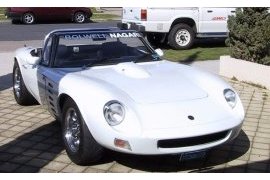 |
 |
|
| |
Also see: Bolwell Car Reviews |
| |
On Graeme Bolwells return from a working holiday in
the UK (with much time spent at Lotus), work soon commenced
on the MK VIII. In fact this new model was released in
1969 while the MK VII was still in production! The fish mouthed "E-type" front was replaced by a redesigned
wedge-shaped nose.
Graeme acknowledged that the rear
screen was very much like the Lotus Europa and that
the doors were similar to the Lamborghini Muira, but
the tail was pure Bolwell - although the shape had
to be tempered to take proprietary tail-lights (similar
to the Aston Martin DB6). For the first time a Bolwell had protection with the bolt-in
front and rear bumpers, a design breakthrough by Bolwell.
But the biggest change came with the power plant and other
components. The MK VIII moved from Holden to Ford power, utilising
a 302 or 351 cubic inch V8 engine to propel the 920kg
body and its occupants - a very light-weight, very high
powered car. |
|
 |
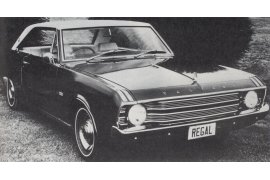 |
 |
|
| |
Also see: Chrysler Valiant Car Reviews and VF Valiant Specifications |
| |
Ask someone which model Valiant is their favorite, and the most likely answer will be either the one they currently own, or the one they regret parting with. For our money, the face-lifted VF ushered in a new elegance and style lacking in so much of the competition, and with the introduction of the “Pacer” Chrysler clearly indicated the new found good looks would be matched by equally impressive performance. |
|
 |
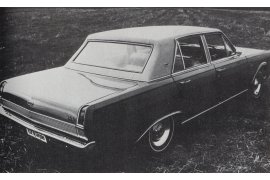 |
 |
|
| |
Also see: Chrysler Valiant Car Reviews and VF Valiant Specifications |
| |
At
the luxury end of the VF Valiant range came the Regal 770, similar in specification
to the VIP and marketed as its replacement, it would
allow the manufacture of an even bigger and more
up-market VIP to follow. The 5.2 liter “Fireball” 318
V8 replaced the 4.4 liter 273 V8, while a wider range
of seating arrangements were offered. In anticipation
of new government legislation during the production
cycle of the VF, Chrysler increased the number of
safety features including a full length padded instrument
panel and energy-absorbing steering column.
|
|
 |
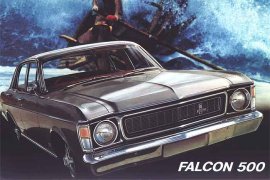 |
 |
|
| |
Also see: Ford Falcon XK to XC Car Reviews and Falcon XW Specifications |
| |
The XW represented the first real attempt to more definitely differentiate the Australian Falcon from the styling of its US equivalent.
In fact, the Australian designers did such a good job that many thought the XW to be an entirely new model, rather than merely a facelift of the XR/XT. The basic structure remained the same, but the Australian car replaced the traditional round tail lamps once and for all with modern, horizontally split lenses, and introduced a heavier grille, with wrap around indicators and side lights, producing a distinctive and now unique design.
|
|
 |
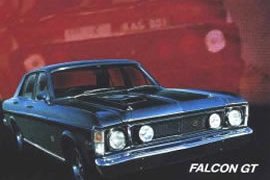 |
 |
|
| |
Also see: Ford Falcon XK to XC Car Reviews and Falcon XW GT Specifications |
| |
In May 1969 the first of the XW GTs rolled off the Broadmeadows assembly line. Ford upped the ante with the XW by fitting the 351 cubic inch (5.8 liter) Windsor V8 with an output of 290 bhp (217KW) and 385 ft/lbs of torque. With bigger brakes, a final drive ratio of 3.25:1, a huge 36 gallon (164 liter) fuel tank and suspension mods to take the extra power and torque, the XW seemed to be the ultimate grand tourer.
|
|
 |
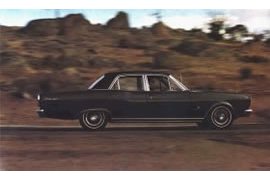 |
 |
|
| |
Also see: Ford Fairlane Car Reviews and ZB Fairlane Specifications |
| |
Minor revisons to the front and rear styling marked the ZB. The tail lamp treatment was altered, retaining the large square Galaxie style lamp divided into 2 parts by a rectangular indicator lens, replacing the central circular one. Options for the Custom included the 302ci V8, automatic transmission, power disc brakes, power steering, vinyl roof, tinted laminated windscreen, radio, clock and better wheel trims and tires. The Fairlane 500 of course came standard with many of these features, the only options being a vinyl roof, radial and whitewall tires, a radio and tinted/laminated windscreen. |
|
 |
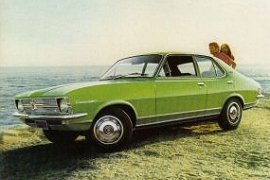 |
 |
|
| |
Also see: Holden Torana Car Reviews and LC Torana Specifications |
| |
The HB Torana was replaced by the LC (which stood for "Light Car") in October 1969. A much better car than its predecessor, it did however share the same floorpan - although on 6 cylinder models the wheelbase was lengthened. Its timing could not have been better, particuarly as Australia at the time was dominated by six cylinder Holden, Falcon and Valiant family sedans.
|
|
 |
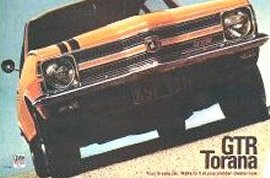 |
 |
|
| |
Also see: Holden Torana Car Reviews and LC Torana Specifications |
| |
The LC Torana was being designed with clay models back in 1966, and while on the drawing board the designers tried over 60 different grille and headlight combinations before they settled with the final product. The new model was finally released to dealers on October 28th 1969, with the XU1 appearing a little later. The real news upon the LC's launch was the 6 cylinder engine, which came in two varities, the 138ci version of the 161 Red Engine, along with the 161 2640 engine as fitted to the HT Holden. The latter engine had a respectable power output of 114 bhp @ 4400 rpm, and torque of 157 lb. ft at 2000 rpm, and it was this unit that naturally found its way into the GTR. |
|
 |
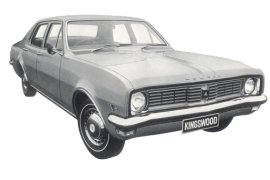 |
 |
|
| |
Also see: Holden HK to WB Car Reviews and Holden HT Specifications |
| |
Another year, another facelift. The obligatory revisions to the grille and tail lights were completed, but Holden needed to advertise that there were some 65 major improvements over the previous HK model for the buying public to take notice.
|
|
|

|
|
 |
|
|
|
